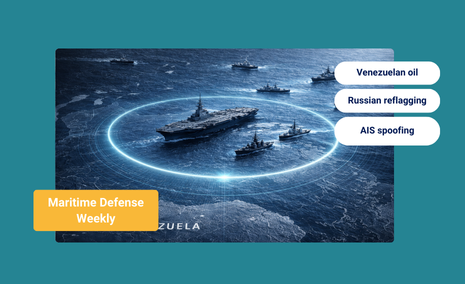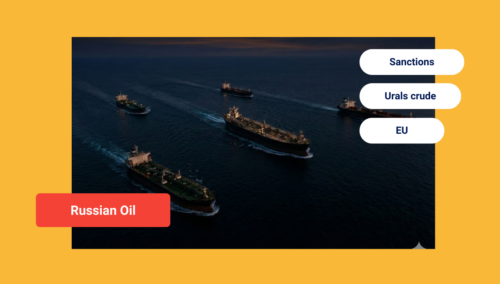Reports
How Maritime AI™ Uncovered a Human Trafficking Network in Cambodia
What’s inside?
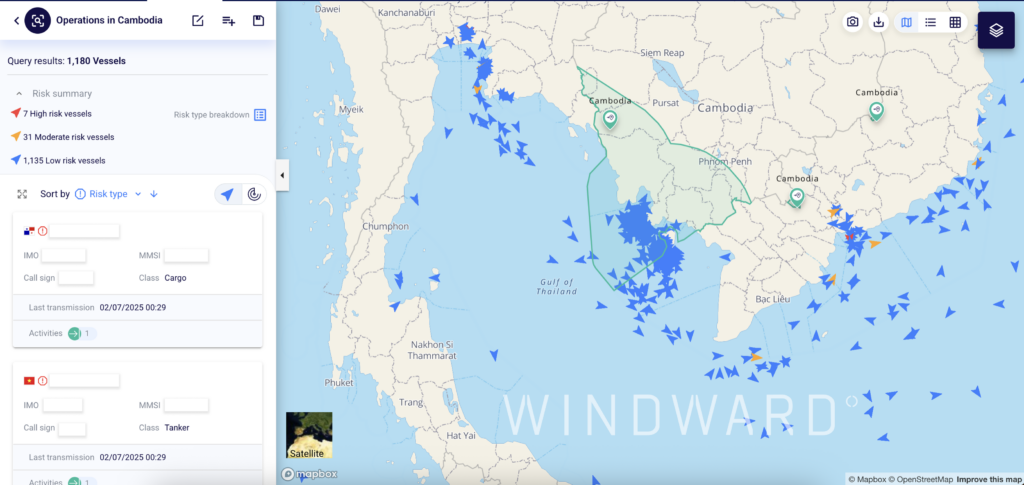
Image: Windward Maritime AI™ Search Engine, Operational View of Cambodian Waters

Image: The vessel’s risk overview, as seen in Windward Maritime AI™ Platform
This 30-year-old cargo vessel, operating under a flag of convenience, had never before called at a Cambodian port. In the days immediately before and after its first-ever stop at Sihanoukville on May 24, the vessel demonstrated loitering behavior and unexplained AIS dark activity, both well-documented red flags associated with smuggling, trafficking, or other covert maritime operations.
Further investigation revealed a layered operational structure:
- The vessel is operated by a Chinese company that manages a fleet of nine ships
- Ownership resides with a single-vessel entity incorporated in Hong Kong, a structure commonly used to compartmentalize risk and limit financial liability
Port State Control (PSC) records for the vessel show a consistent pattern of deficiencies and multiple detentions during inspections in China, Indonesia, and the Philippines, reinforcing the vessel’s high-risk profile.
Most notably, after departing Cambodia on June 1, the vessel transited into Vietnamese waters and intentionally disabled its AIS transponder. This is a strong indicator of efforts to conceal location and activity, often used to evade monitoring during unauthorized cargo transfers or human trafficking operations.
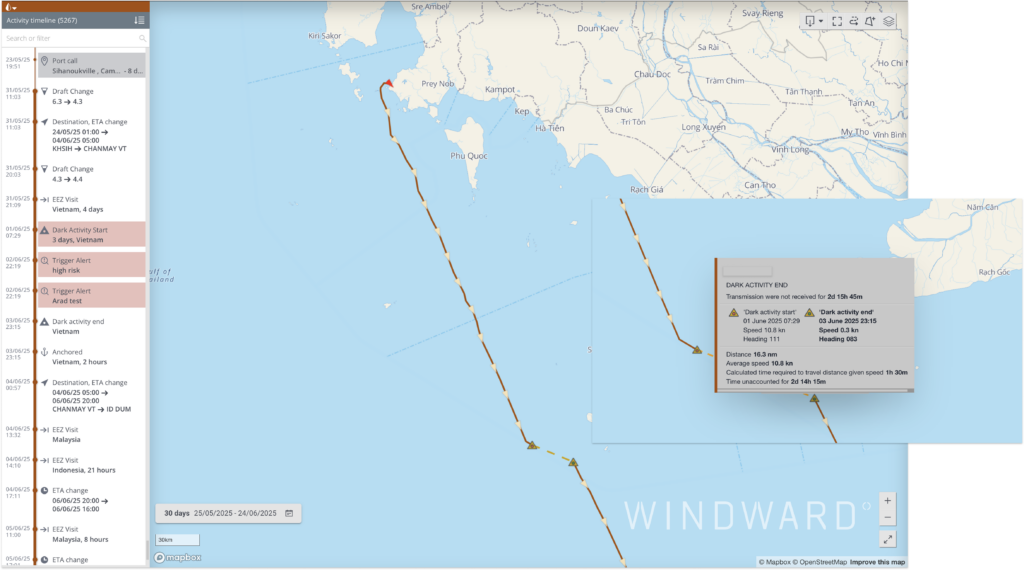
Image: Windward Platform Screenshot, AIS Gap Over Vietnamese Waters

Image: The individual’s risk assessment, taken from Windward’s in-app Due Diligence portal
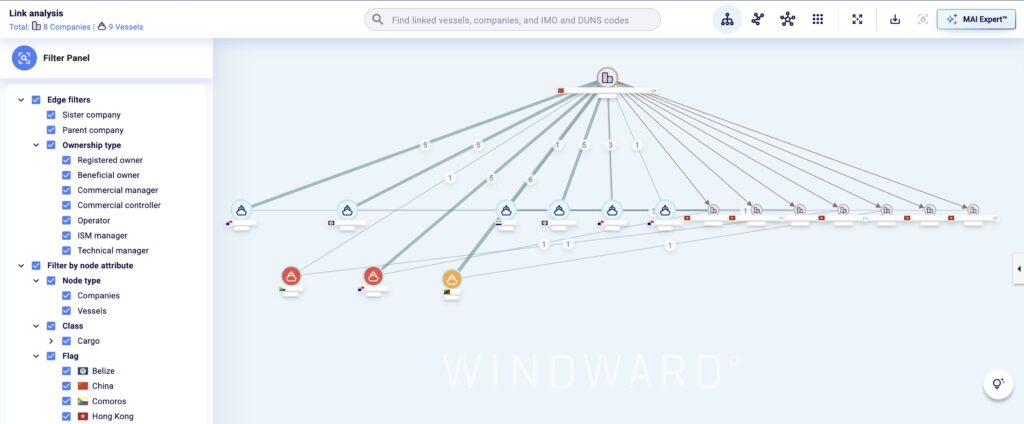
Image: Windward’s Visual Link Analysis tool showing the company’s entire ownership structure

